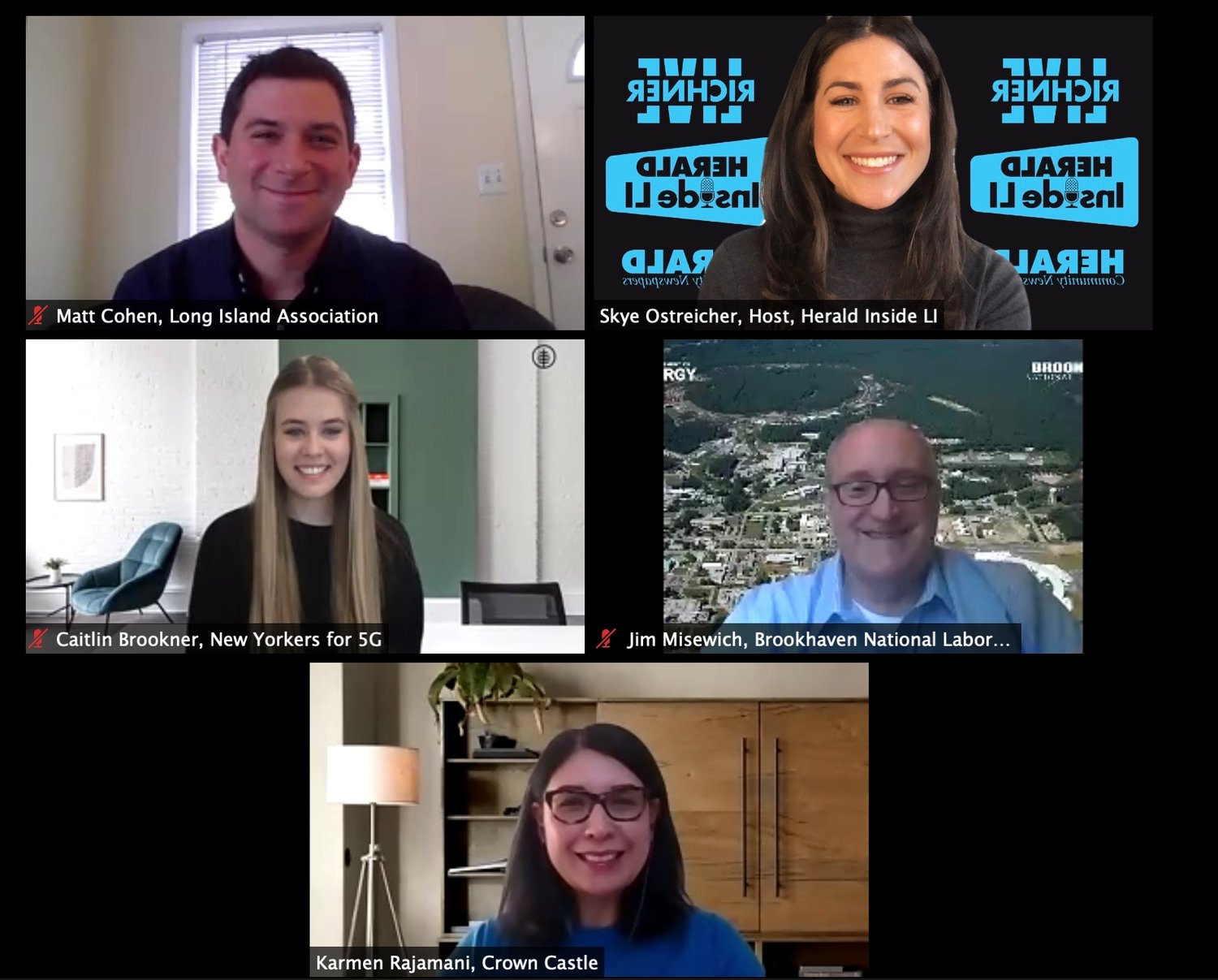Experts: Expand 5G to increase connectivity
Internet use has rapidly increased across the country as meetings and events have switched to virtual platforms. As a result, many devices have slowed.
Most Americans have relied in recent years on 4G broadband cellular networks to connect to the internet on their devices. Starting last year, however, a select number of areas across the country have upgraded to 5G — the fifth generation of broadband connectivity.
On Dec. 3, Herald Inside LI held a webinar, sponsored by Crown Castle and New Yorkers for 5G, to educate Long Islanders about 5G. In the Zoom meeting, experts said America will likely see more areas adopt the new network in the near future.
“5G is a platform for innovation because it will improve internet service by making it faster, and with 5G, people will be able to download more on the internet,” said Karmen Rajamani, director of Crown Castle East Area, which works with governments and private companies to build out communications infrastructure. “With this pandemic, we are losing so many businesses; however, when we have technological advancements through 5G, new small and medium-sized businesses will come into fruition, and with that, more people will need to hire new people for those local businesses. Also, 5G will help new medium-sized businesses grow into larger ones.”
Caitlin Brookner, spokeswoman for New Yorkers for 5G, a statewide coalition of chambers of commerce, health care providers, real estate groups and development organizations, said the country is facing a technology crisis because of increased internet use. Communities of color in cities and underserved areas with weaker internet connections have been most affected during the pandemic.
“Many people lack access to high-speed internet, and this affects their ability to do online schooling and maybe even prevents them from socializing during this pandemic. 5G is the next generation of connectivity,” Brookner said. “The digital divide is not color blind. High-speed internet can serve as a social justice catalyst to allow for minorities to have better internet access when trying to speak with professors, etc. We need to make sure that minority communities aren’t left behind in the next wave of 5G.”
“This internet crisis is a social justice issue, and 5G will help break this divide,” agreed Matt Cohen, vice president of government affairs and communications for the Long Island Association. “5G will hopefully help minority communities to not have to go to a hot spot on the side of the road to connect to teachers or to get a doctor's appointment.”
According to Jim Misewich, associate laboratory director of energy and photon sciences at the Brookhaven National Laboratory, in Suffolk County, having 5G in more communities could also lead to new scientific findings and breakthroughs.
Under a 4G network, Misewich said, “We cannot study the full structure of the nucleus using a classical computer, but we will be able to understand all this better if we have 5G. We will be able to model things on computers that we currently can’t model now using 5G, which can lead to new discoveries in science.”
Both Brookner and Rajamani said expanding 5G coverage to more communities across the nation will help doctors to perform surgeries remotely, and it will provide better connectivity when people reach out to first responders for help.
“Eighty percent of 911 calls are made from a cellular device, and 5G will deliver better and faster responses and better access to first responders,” Brookner said. “People and first responders might even be able to send pictures in real time of their situations, which would be an advantage.”
For more information on 5G, specifically how it will affect health care workers and first responders, tune in to part two of the Herald Inside LI Webinar about 5G at 10 a.m. on Thursday, Dec. 10.
Expected guest panelists will include Dr. Purna Prasad, chief technology officer for Northwell Health; Ana Rua, government affairs manager for New York Crown Castle; and Fan Ye, associate professor of the electrical and computer engineering department at Stony Brook University.
To sign up for part two of the Power of 5G series, go to www.LIHerald.com/5G2. To view a recording of part one of this webinar and to register for future ones, visit liherald.com/insideli.

 49.0°,
Fair
49.0°,
Fair 




